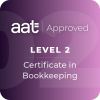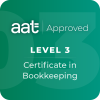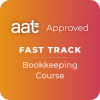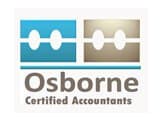
What is AAT Level 2?
AAT Accounting level 2 is a foundational qualification in accounting. It is Accredited by Association of Accounting Technicians, also known as AAT. It is developed for those who are new to accounting field or looking to formalize their accounting skills.
AAT level 2 provides a solid base in accounting practices. It helps to develop essential skills in accounting, that are useful and important for career in finance.
What is it equivalent to and requirements
AAT Accounting Level 2 is equivalent to GCSE. The are no basic requirements to start AAT level 2. It is recommended by AAT that students should start their AAT Level 2 with a good standard of English and Maths.
If you have previous knowledge or experience in accounting, you can check your knowledge by clicking the link below:
https://www.aat.org.uk/qualifications-and-courses/skillcheck
AAT Skill check will help you find the best qualification for you.
Who is it suitable for?
AAT Accounting Level 2 is suitable for anyone who wants kickstart their career in accounting. It is suitable for young people who just finished school and want a career in accounting or for any adult who wants to change their career to accounting.
About the AAT Level 2 Certificate in Accounting
| Qualification name | AAT Level 2 Certificate in Accounting |
| Qualification number | 603/6338/1 |
| Level | 2 |
| Guided learning hours (GLH) | 255 |
Course Structure
This qualification consists of four units, which are mandatory units.
- Introduction to Bookkeeping
- Principles of Bookkeeping Controls
- Principles of Costing
- Synoptic Assessment – The Business Environment
The suggested guided learning hours by AAT for this qualification is 255 Hours in total, but it varies between the training providers.
All four units together typically covers topics such as double-entry bookkeeping, VAT, basic concept of costing. These units also cover good understanding of general, purchase and sales ledger. By completing this, the students will learn an understanding of accounting software, develop IT skills which are need in this field.
Exam Structure
In AAT Accounting Level 2, the three units aka Introduction to Bookkeeping, Principles of Bookkeeping Controls and Principles of Costing are assessed individually in end-of-unit assessments. Each assessment is 90 mins. This qualification also includes a synoptic assessment aka The Business Environment, which assess the knowledge from across a number of units. This assessment is 120 mins.
The students can sit AAT Accounting Level 2 assessments at any AAT approved exam centre.
How the overall grade is determined
Students will be awarded an overall qualification grade (Distinction, Merit, and Pass).
Students who do not achieve the qualification will not receive a qualification certificate and will be shown as unclassified. This is indicated below for illustrative purposes only.
The raw marks of each assessment will be converted into a percentage mark and rounded up or down to the nearest whole number. For example, 75.5% would be rounded up to 76%, whereas 82.1% would be rounded down to 82%. This percentage mark is then weighted according to the weighting of the unit assessment within the qualification. The resulting weighted assessment percentages are combined to arrive at a percentage mark for the whole qualification.
| Grade definition | Percentage threshold |
| Distinction | 90–100% |
| Merit | 80–89% |
| Pass | 70–79% |
| Unclassified | 0–69% Or failure to pass one or more assessment/s |
Example of Pass
| Assessment | Contribution of assessment to qualification grade | Percentage achieved | Weighted percentage contribution to grade |
| Introduction to Bookkeeping | 25% | 76% | 19% |
| Principles of Bookkeeping Controls | 25% | 72% | 18% |
| Principles of Costing | 20% | 81% | 16.2% |
| The Business Environment Synoptic assessment | 30% | 77% | 23.1% |
| Total | 76*% | ||
*has been rounded to nearest whole number
Example of Merit
| Assessment | Contribution of assessment to qualification grade | Percentage achieved | Weighted percentage contribution to grade |
| Introduction to Bookkeeping | 25% | 86% | 21.5% |
| Principles of Bookkeeping Controls | 25% | 81% | 20.3% |
| Principles of Costing | 20% | 75% | 15% |
| The Business Environment Synoptic assessment | 30% | 91% | 27.3% |
| Total | 84%* | ||
*has been rounded to nearest whole number
Example of Distinction
| Assessment | Contribution of assessment to qualification grade | Percentage achieved | Weighted percentage contribution to grade |
| Introduction to Bookkeeping | 25% | 87% | 21.8% |
| Principles of Bookkeeping Controls | 25% | 92% | 23% |
| Principles of Costing | 20% | 98% | 19.6% |
| The Business Environment Synoptic assessment | 30% | 86% | 25.8% |
| Total | 90%* | ||
*has been rounded to nearest whole number
AAT qualification support
Throughout the life of this qualification, AAT will make available a range of free materials and resources to support tutors and students in delivery and assessment.
Materials produced for this qualification will include:
- practice assessments for each unit
- one Sample Assessment and Mark Scheme (Introduction to Bookkeeping)
- Qualification Technical Information (QTI)
- annual Chief Examiner reports.
Additional materials may also include:
- e-learning
- Green Light tests
- webinars
- tutor-to-tutor sessions at network meetings.
All AAT study support resources can be accessed via the AAT Lifelong Learning Portal.
Benefits
There are so many benefits of AAT Accounting Level 2. The skills developed through this qualification could lead to employment such as accounts assistant, trainee finance assistant, accounts payable clerk, trainee accounts technician, accounts administrator etc.
The knowledge developed during this qualification is really important and needed for higher level qualifications such as AAT Accounting Level 3 and AAT accounting level 4.
Conclusion
In conclusion, completing the AAT level 2 qualification is very significant achievement. This qualification provides individuals with necessary skills and knowledge to start a career in finance and accounting field. By completing AAT Level 2 qualification it opens a wide range of exciting career pathways and opportunities for professional growth.






